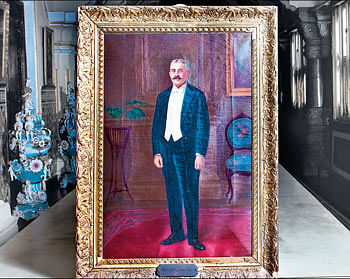It was exactly a 100 years ago that Gustav Krumbiegel established the Horticultural School in the erstwhile Mysore state, a first for India. The contribution of the legendary German to Karnataka is immense,writes Pushpa Achanta

‘Whatever he touched, he adorned’, says the cover of a book documenting how the legendary German, horticulturist, town planner, architect and conservationist Gustav Herman Krumbiegel, turned Bangalore and Mysore into garden cities. Introducing this fascinating work published in 2010 supported by Goethe Instuit/Max Mueller Bhavan, Bangalore, co-author Suresh Jayram (founder/director of Bangalore’s 1 Shanthi Road Studio Gallery) states that very few recorded details about this multifaceted visionary who inspired many, exist. The book also highlights the contributions of M H Marigowda, John Cameron and H C Javaraya, to the landscape of Bangalore and Mysore.
Jayram and his then assistant Raghu Tenkayala (a young law graduate and avid tree lover from Bangalore) began their quest for information on Krumbiegel in Lalbagh’s library. Except for portraits of its former directors, they found little. The Christian Cemetery in Langford Town housing Krumbiegel’s simple gravestone under an African tulip tree (one of his favourite species), yielded little.
However, Suresh Prabhu, the architect son of M Krishnamurthy Naidu, Krumbiegel’s able assistant who continued arboriculture and landscaping in Bangalore after the German, shared a few old photographs that Mrs Krumbiegel left behind. The latter apparently entrusted most of her husband’s writings and drawings with the state, which perhaps preserved them poorly.
These include two booklets, namely, ‘A Note on the Development of Horticulture in Mysore and The Organization of the Department of Horticulture and Botany, 1920’ and ‘The Administrative Report of the Government Gardens Department for the year 1927-28’. “These are the most detailed accounts of horticulture in colonial India and envisioned a beneficial industry,” observes Suresh in the book. A meeting with the scion of the Wodeyar family, Srikantadatta Wodeyar, and his curator led the duo to a portrait of Krumbiegel in the Mysore Palace.
Going places
A Freemason, Krumbiegel was born on December 18, 1865 in Lohmen near Dresden in Germany. After studying in Willsdruf and Dresden and a horticulture apprenticeship at King’s Garden in Pillnitz specialising in landscape horticulture and architecture, Krumbiegel worked at the agricultural and fruit department of Schwerin Royal Gardens, Mecklenburg and a private garden in Hamburg. S Narayanaswamy, former Senior Assistant Director of Horticulture, Karnataka mentions in the tome that Krumbiegel thus gained vital experience in cultivating vegetables, fruits and rare plant species.
Moving to London, Krumbiegel worked at Hyde Park while learning about town planning, horticulture, architecture and horticulture at South Kensington University. Next, his skills were recognised at the plant propagation department of the Royal Botanical Gardens at Kew between 1888 and 1893. Due to such distinct abilities, the German was referred to Maharaja Sayaji Rao Gaekwad who needed a keen and capable horticulturist. Relocating to Baroda, Krumbiegel created orchards and gardens for the kingdom and enhanced the beauty of the ruler’s personal estates at Woodstock in Ooty and Bombay.
Noticing the horticulturist’s terrific output, His Highness Krishnaraja Wodeyar of Mysore, Gaikwad’s close associate, persuaded Sayaji to depute Krumbiegel to Mysore. The eminent German’s relationship with this erstwhile princely state lasted until his passing on February 8, 1956.